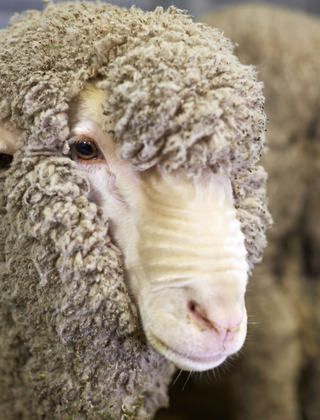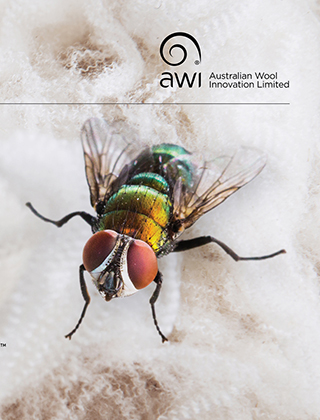Don’t be a basil fawlty! How to greet new arrivals to your property

Buying, bringing home or agisting sheep after a change in season is in many ways like a hotel manager accepting a tour bus of visiting guests. If the hotel manager doesn’t manage the welcome and check-in process properly, there can be all kinds of problems and customer complaints.
Buying, bringing home or agisting sheep after a change in season is in many ways like a hotel manager accepting a tour bus of visiting guests. If the hotel manager doesn’t manage the welcome and check-in process properly, there can be all kinds of problems and customer complaints.
Similarly, without appropriate preparation and careful management, issues such as plant poisonings, resistant worms and brucellosis could trouble your new arrivals and result in stock and financial losses. With this in mind, here is a step by step guide to making sure your ‘guests’ settle in well.
STEP 1 – ASSESSING THE RISK OF THE ‘PASSENGERS ON THE BUS’
Who is getting off the ‘bus’? Are there passengers or stowaways you don’t want? Different regions within Australia and different classes of sheep have different risks to your enterprise; for example a trade mob of ewes and rams from western NSW might have a lower OJD risk but higher risk of bringing in brucellosis than a mob from Victoria.
What are the big diseases you need to worry about buying in? The big five are:
- Brucellosis
- Footrot
- Lice
- Resistant worms
- Ovine Johne’s disease (OJD).
Pink eye is another disease that is worthy of assessing the risk.
Can you plan for the risk? Yes, that is exactly what an on-farm biosecurity plan is for and Sheep Health Statements are the best tool for assessing the risk. Further information about on-farm biosecurity plans, including templates and reference documents, is available on the Farm Biosecurity website. For an excellent practical example of how to read and assess your Sheep Health Statement, view the recent Back to Business webinar ‘Livestock health’ by Dr Jill Kelly.
STEP 2 – MAKING SURE THE ‘PASSENGERS ON THE BUS’ ARE HEALTHY AND SAFE
Diseases love the stressed and vulnerable, and big changes in environment place sheep into both categories. MLA’s guide ‘Is the animal fit to load?’ gives a good overview of the expectations and guidelines for all parties to manage any trip.
But sadly, sometimes things do go wrong. The main problems to be concerned about during transport are:
- Injuries
- Metabolic disease, such as hypocalcaemia
- Salmonella, a bacteria that causes scours, sepsis and severe fever
- Pneumonia
Injuries and diseases like pneumonia and salmonella are best managed by following low stress stock handling and proper pre-trip preparation.
Anti-inflammatories are useful in certain situations because they reduce the amount of inflammation and, like analgesics, reduce pain, particularly with injuries. What this means is the animal can heal faster and put weight on quicker, as well as address any welfare concerns. Different antibiotics treat different bugs, so speak to your veterinarian regarding the right type of antibiotics to use for sick animals.
Timeliness of treatment for all these conditions is the key to successful outcomes, so being prepared to treat any sick sheep is not only good stewardship but also makes good business sense to minimise losses and protect your new investments.
What is hypocalcaemia? The body runs the levels of important chemicals in what we call ‘tight homeostasis’ which means it controls levels of chemicals like calcium with white knuckle tight reins. Throw in a management event, transport or a sudden change to a chronically low calcium diet (like grain) and suddenly the blood levels can drop dangerously low. One of the main jobs of calcium is muscle function. Low calcium blood levels can cause collapse and sometimes tremors.
As always, the aim is to ‘control the controllables’ and be prepared. This means, have:
- calcium and salt ready when the sheep arrive, particularly scanned in lamb (SIL) ewes
- calcium, magnesium and glucose bags handy to treat any that have metabolic issues or weakness
- antibiotics and analgesics/anti- inflammatories ready for any injuries or sick animals.
If you have dealt with pregnancy toxaemia, you will know what a difference the oral drench can make, so it is worthwhile giving it to any down sheep as well, if handy.
STEP 3 – HITTING THE ‘BUFFET BAR’ TOO HARD: DISEMBARKING IS THE DANGER PERIOD FOR POISONINGS
Why do feed poisonings occur? Sheep eat things that are bad for them when they lose their ability to selectively graze, because for instance:
- they have little choice of what to eat, such as during drought/monoculture
- they get offered too many goodies at once (grain poisoning)
- recent rain makes bad things look really tasty
- we have sprayed herbicides and now bad things are tasty
- they are hungry after transport or a management event.
Anyone who has stared at a roadhouse hotbox while hungry knows how tempting a food that could reduce your life expectancy can be… sheep are no different.
Nitrate poisoning is one of the most common toxicities; it occurs when certain plants accumulate high levels of nitrate. This can be because of high levels of fertiliser, long overcast conditions (young oat crops) or in this context high amounts of urine and faecal matter as is common in yards and holding paddocks. Basically, when eaten, a chemical reaction occurs which depletes red blood cells’ ability to give oxygen to the body. The most common offender weeds are pigweed, cat head, button grass, capeweed and variegated thistle.
What is pulpy kidney? Rapid changes in feed or going on to large amounts of green feed can quickly cause an explosion in the population of bacteria (called the clostridials) in the rumen and intestines, which releases toxins into the blood stream causing sudden death.
STEP 4 – WHAT TO DO DURING THE ‘CHECK-IN’ PROCESS
What are the main ‘check-in’ protocols you need to follow when the sheep have arrived?
If you are not 110% sure of their vaccination and drenching history, experience has shown it is better to not assume too much. Generally the check-in process lasts 24-72 hours; holding them in the yards/holding paddocks gives sheep plenty of time to settle. For a good check-in, you need:
Hay and lots of it
There is a famous saying of veterinarians: “The solution to pollution is dilution”. The goal is to fill the sheep with hay so there is less room to eat large quantities of toxic plants/rich green feed all at once. This gives the animals time to get over the trip and let the rumen adjust to the new feed.
Quality is not that important when compared to quantity and access points. Average quality hay or straw is fine. However, high quality lucerne hay and the like might actually be dangerous to start them on. This is because: (a) we are looking to start up the chemical reactions in the rumen softly and slowly, and chewing achieves this, and (b) we are not feeding for growth, that’s what the green feed they are going on to is for. NSW District Veterinarian Dr Jill Kelly makes the following point: “Breaking up bales, using racks or converted shuttles is a good way to get multiple access points. Not having enough access points will cause the bullies to gorge while the shy ones are getting hypocalcaemia out the back.”
If you are looking for a rough rule of thumb for how much hay to put out, then sheep eating 2% of their body weight in straw/hay per day is a good place to start as a minimum (ask a nutritionist for advice if needed and get feed tests done for accuracy). A 350kg round bale of hay/straw will feed approximately 250 60kg ewes per day during induction.
Minerals
After a long trip, the body’s chemicals can be depleted, especially of calcium. Having calcium, salt and magnesium available in one tub per 100 sheep in the holding yards can be beneficial if they, especially SIL ewes, have low levels. Your nutritionist can advise you on specifics.
Vaccinate for 6 in 1
When we change a flock’s diet quickly, we expose the sheep to the risk of pulpy kidney. A change of season to green feed is a good example of this. You don't have to prevent many losses to make the benefit-cost ratio of vaccinating very obvious.
Worms
As the WormBoss website says: “Resistant worms: you can breed them or buy them in.” As one of the biggest causes of loss in the sheep industry, you must take this risk seriously. An introduction of resistant worms hinders all sheep production and can cause deaths. The standard quarantine drenching is: use four unrelated chemical groups and hold the sheep in containment paddocks for three days before putting them out to pasture. WormBoss has an excellent resource on this.
Lice
Avoiding the introduction of lice might not be as ‘life or death’ an imperative as feeding to prevent a poisoning, pulpy kidney or worm burdens, but it is still a very important risk that needs to be mitigated. See LiceBoss at for details.
STEP 5 – SHOWING THEM TO ‘THEIR ROOM’
Once stock have been checked in, it is time to show them to their ‘room’. Good customer service is about doing the simple things right:
- A welcome drink – make sure to push sheep on to water so they can get a drink and know where it is. Do it twice just to be sure and check them regularly.
- Room service – if you need to get them to their paddocks quickly, remember “The solution to pollution is dilution” so make sure they are full up on hay. Sheep do most of their grazing in the morning, so to manage the risk of overindulgence take them to their paddock in the afternoon.
- Offer a full breakfast – "Nutrition can be an art as well as a science,” says Dr Jill Kelly, so putting hay out even when on green feed/ grazing crops allows them to selectively graze and allows for good fibre uptake.
Two extra points to consider
Like all good trips, having a “weather contingency plan and transit insurance” is a smart move, says Brett Smith from Elders. Significant rainfall events can increase the likelihood of a mishap and a significant disruption to the check-in process.
Most infectious diseases show themselves within 21 days, so keep your new arrivals separate from your other sheep before mixing during this period. Pink eye is a good example of this. Two notable exceptions that could get missed in a 21-day quarantine are virulent footrot in a non-spread period, and brucellosis which requires palpation and blood testing of the rams. Regular checking of the stock during this period is the key.
By managing the risk and process of onboarding new sheep well, you can minimise the potential for losses and maximise the chance of getting healthy sheep ready to perform… and get a good rating on Sheep TripAdvisor!
WHAT TO PREPARE FOR YOUR ‘GUESTS’
- Hay: 2% of body weight per day, in multiple locations.
- Calcium/salt/magnesium supplements.
- Calcium/energy bags.
- Farm animal first aid kit: antibiotics and analgesics/ anti-inflammatories.
AWI is grateful to Dr Tim Gole for the preparation of this article. Tim is head veterinarian and principal of For Flocks Sake, a sheep production services and consultancy firm based in Dubbo, NSW.
This article appeared in the June 2020 edition of AWI’s Beyond the Bale magazine. Reproduction of the article is encouraged, however prior permission must be obtained from the Editor.















